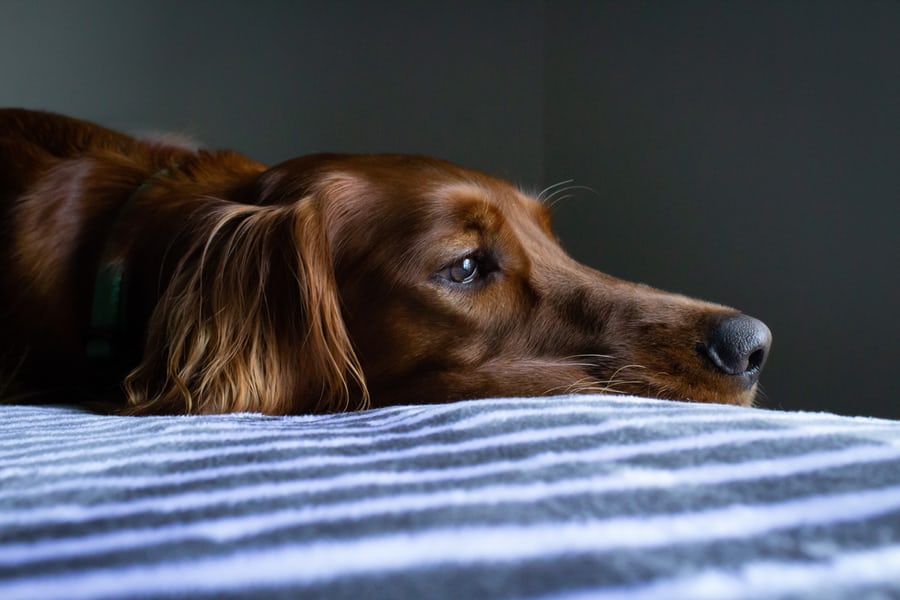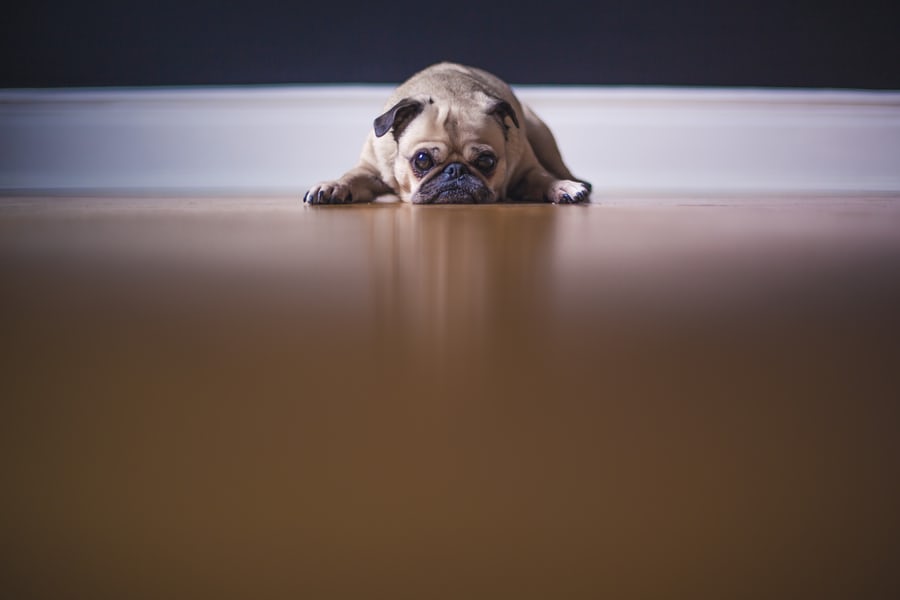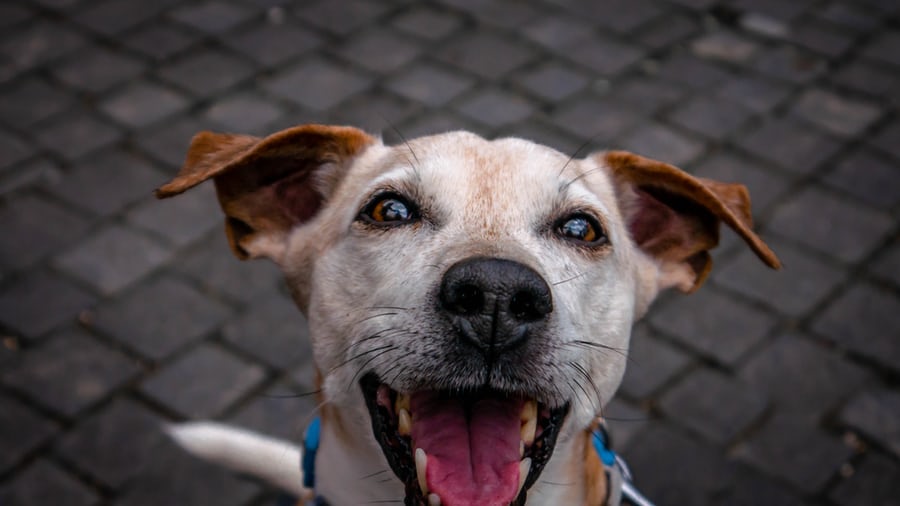Dog separation anxiety: a topic that has already been spoken about at great length on the Gublog. Though with research indicating that up to 85% of dogs struggle with being left alone, we believe it’s crucial for owners to be able to spot the signs of dog separation anxiety, and to help their pets overcome the disorder.
We have previously touched upon the concept of time for dogs, and how it differs from our own. Whilst that explained the potential roots of a dog’s anxious disorder, we are now going to look at the tricks of tackling any anxiety that they may be experiencing. These are all techniques that can be adopted by any pet owner within their own home, as well as a couple of accessories that may help.

What is dog separation anxiety?
Dogs are animals that need social contact, especially from their human family. When a puppy is born, it’s crucial that they spend between two to three months with their mother and litter. From them, they will learn the majority of what they needed to become a well-balanced dog. When they then move to our homes, we tend to spend a lot of time at their side. However, when our daily commitments reappear, we find ourselves having to leave our dogs alone for long periods of time.
If there is a lack of effort from puppyhood to teach a dog to be without humans or other dogs, periods of separation are bound to cause a great amount of uncertainty and stress. Dogs are not born with separation anxiety: it is something acquired later on. This is why, with the right techniques, we can be best equipped to reduce the effects of dog separation anxiety.
Signs of dog separation anxiety
- Repetitive movements
- Continuous barking
- Obsessive licking or biting, to the point of self-harm
- Causing damage around the house (objects, furniture, carpets, walls)
- Urinating or defecating inside the house
- Waiting obsessively behind the door for the owner’s return
- Escape attempts
These are the most common signs of dog separation anxiety disorder. When dogs start to exhibit these behaviours, it is our duty as their owners to help them.
Tips for overcoming dog separation anxiety
- 1 – If your puppy or dog is not accustomed to spending time alone, never start by leaving them for long periods of time. Instead, begin with a couple of minutes, and gradually increase from there. If their anxiety is already quite severe, try a simple game in which you leave for a couple of minutes, wait behind the door and go back in. After a little while, you try doing so for five minutes, then again for ten minutes and so on. This will teach your dog that when you go through the door, it doesn’t mean that you are leaving forever. It shows that you are only going out for a little while, and that you will always come back
- 2 – Before leaving a dog alone, make sure that they are tired, both physically and mentally. A good walk, some social contact with other dogs and a lot of sniffing around are all effective ways of achieving this, though make sure you tune into our next blog for our top tips to tire out even the most energetic dog…
- 3 – When leaving the house, try to ignore your dog. If you give them too much attention when exiting and coming back, they can start to think that something important is about to happen, which can lead to stress. So although it seems hard, avoid petting your dog too enthusiastically when saying hello or goodbye.
- 4 – Refillable treat toys, available on the internet and in pet shops, are great allies for dogs separation anxiety. These toys have a hole in which owners can hide a couple of treats or food; becoming a prize that the dog reaches playing with the toy and allowing them to use all of their senses. Dogs often find them so entertaining that they forget that they are alone, successfully combatting dog separation anxiety. Another trick is to give them a refillable treat toy only during the times when they are left alone, and not in any other situation. This will lead to your dog not associating being without you so negatively.
- 5 – If you are uncertain as to whether your pet suffers from dog separation anxiety, try leaving a surveillance camera on to observe their behaviour when they are alone. Some surveillance cameras enable you to watch what is happening live via a mobile app. This will come in handy not only when you have to spend time away, but also during the exercise mentioned in tip 3, as you will have a live feed to how your dog reacts when you go through the door.
- 6 – Remember, dogs like routine. If you suddenly return to leaving them alone having spent a lot of time by their side, they can suffer a relapse into dog separation anxiety. As always, the best thing you can do is to introduce changes gradually. Thankfully, if work or personal commitments do get in the way, and you are left with no other option than being out throughout the day, know that you can always get in contact with our Gudog sitters. Some offer a doggy daycare service which can last up to 10 hours, meaning that when you are otherwise occupied, you can be assured that your dog is well looked after. However, if you think that all your dog needs is to get some air for a little while when you are away from home, you can always check out our dog walkers. Our walkers can take out your dog for an hour or so, and bring them home happily walked, having crossed paths with other furry friends at the park and sniffed everything to their heart’s content.
We hope that these 6 tips can help both you and your dog to combat separation anxiety. You can tell us how they have worked in the comments section of this post, or via our social media. You can follow us on Facebook, Twitter or Instagram.
What is Gudog?
Gudog is the easiest way to find & book the perfect dog Sitter. Thousands of loving Sitters are ready to care for your dog like family! All bookings come with Veterinary Care & Free Cancellation.

